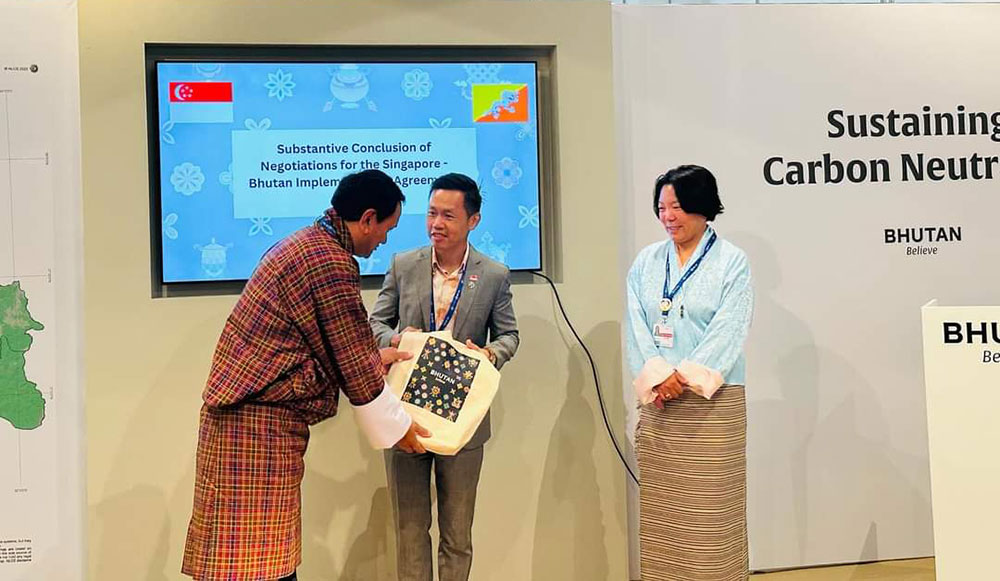
… with high-integrity environmental benefits
Dubai, UAE—To meet Bhutan’s move towards exploring innovative financing solutions to support climate-resilient development, Bhutan and the World Bank launched the Bhutan Climate Fund (BCF) on December 4.
It was a part of the Bhutan Pavilion’s series of sessions at the ongoing 28th Conference of Parties (COP28) in Dubai.
It aims to ensure transparency and accountability of the authorisation and transfer process of Bhutan’s carbon credits—to ensure that communities benefit from carbon revenues, the BCF will link with the National Digital Identity.
The BCF is a first of its kind that will aggregate and monetize Bhutan’s high-integrity net negative greenhouse gas (GHG) emissions at a fair price, reflecting the opportunity cost of Bhutan’s remaining net negative.
According to officials from the Ministry of Energy and Natural Resources, the BCF will pool capital from donor contributions, help in addressing the high costs of ERCs through aggregation, a medium for adjusting fees to cover the opportunity cost for remaining net negative and help the government meet the sustainable development goal.
Bhutan is the world’s first carbon-negative country committed to remaining carbon neutral, keeping its total emissions below the carbon removal capacity of its forests through its 69.5 percent forest cover.
The country’s rivers generate low-carbon electricity and in addition to its electricity consumption are entirely powered by renewable resources. Bhutan contributes to regional decarbonization by exporting run-of-river hydroelectricity. With an initial focus on the hydropower and forestry sectors, the Fund will build on the country’s Kyoto Protocol experience, robust and transparent infrastructure systems, and strong political commitment, including the Carbon Market Rules approved in 2023.
The BCF’s initial capitalisation goal is USD 50 million. The initial focus will be the run-of-the-river hydropower and forestry sectors. The government will develop infrastructure to participate in carbon markets.
After that process, the plan is towards mitigation outcomes generation with a share of proceed plans to citizens in place.
Some of the key highlights of the programme are renewable energy projects, forestry sector nature-based mitigation activities and energy efficiency—195 activities in 7 priority sectors in the national adaptation plan with 22 mitigation activities in place.
The investments are aimed at leveraging the championship of a carbon-negative country. An opportunity to support low-carbon development for one of the handful of carbon-negative countries in the world, strong political commitment to carbon neutrality, access to high-quality forest and hydropower credits, and bigger impacts of aggregating capital and managing the use of carbon revenue.












